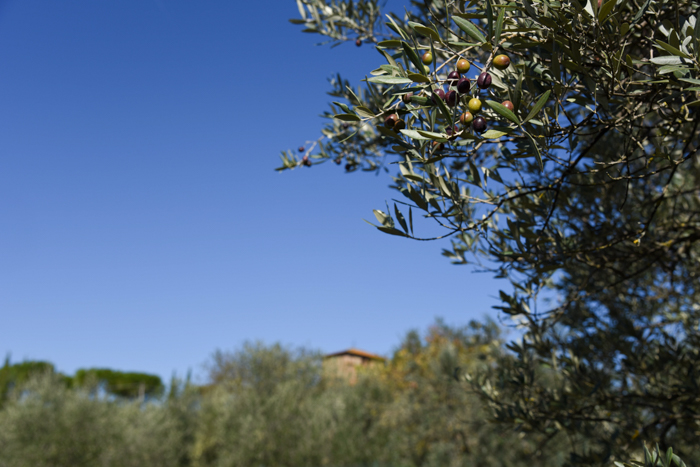 A key component to Tuscany’s wonderful cuisine is its delicious olive oil. Olive oil appears in almost every course; drizzled generously on bread, salads, tomatoes, vegetables, even on the famed Bistecca alla Fiorentina, and used extensively in cooking, from sauces to saute to even sweet desserts. Guests on our private tours in Italy often ask how to identify a quality olive oil. The simple answer – you must know where your olive oil is coming from. Unfortunately, the regulation of olive oil quality is extremely lax, and olive oil can be labelled as Italian, but not from Italy at all. If you can buy directly from a quality producer, that is best. When purchasing at a supermarket or your local gourmet store, look for an extra virgin olive oil that identifies the region it comes from – Tuscany, Liguria, Sicily.
A key component to Tuscany’s wonderful cuisine is its delicious olive oil. Olive oil appears in almost every course; drizzled generously on bread, salads, tomatoes, vegetables, even on the famed Bistecca alla Fiorentina, and used extensively in cooking, from sauces to saute to even sweet desserts. Guests on our private tours in Italy often ask how to identify a quality olive oil. The simple answer – you must know where your olive oil is coming from. Unfortunately, the regulation of olive oil quality is extremely lax, and olive oil can be labelled as Italian, but not from Italy at all. If you can buy directly from a quality producer, that is best. When purchasing at a supermarket or your local gourmet store, look for an extra virgin olive oil that identifies the region it comes from – Tuscany, Liguria, Sicily.
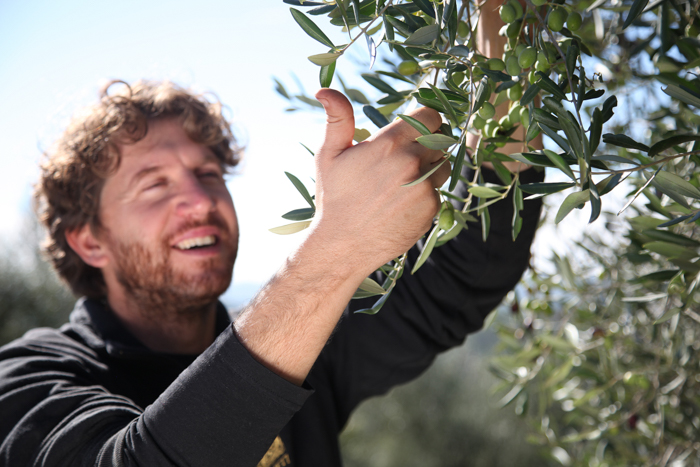 Just prior to a September private cycling tour in Tuscany, I was invited to visit one of Tuscany’s top producers of olive oil, Pruneti. Located in San Polo, near Greve in Chianti, five generations of the Pruneti family have been farming in these hills for over 150 years.Twenty-five years ago, the family decided to focus its production on olive oil. They still produce some saffron, wine, and iris flowers – the roots are used in perfume, and the San Polo area traditionally sourced this unique product. But today, the commercial focus is olive oil, and brothers Gionni and Paolo oversee 26000 olive trees spread across 170 hectares, and produce a variety of olive oils, all biodynamic.
Just prior to a September private cycling tour in Tuscany, I was invited to visit one of Tuscany’s top producers of olive oil, Pruneti. Located in San Polo, near Greve in Chianti, five generations of the Pruneti family have been farming in these hills for over 150 years.Twenty-five years ago, the family decided to focus its production on olive oil. They still produce some saffron, wine, and iris flowers – the roots are used in perfume, and the San Polo area traditionally sourced this unique product. But today, the commercial focus is olive oil, and brothers Gionni and Paolo oversee 26000 olive trees spread across 170 hectares, and produce a variety of olive oils, all biodynamic.
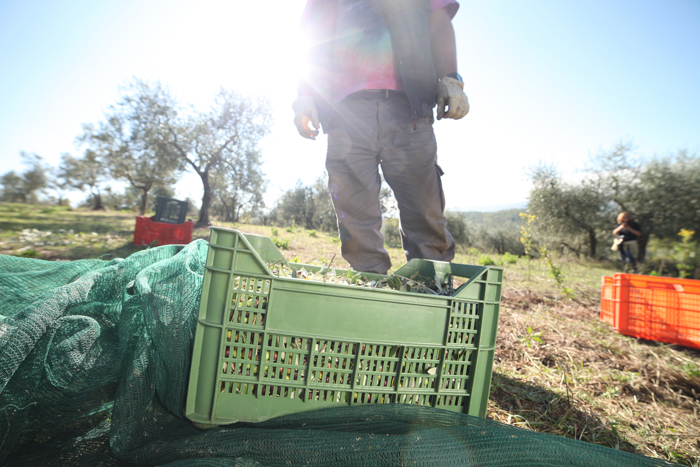 In 2008, the family built the current mill and tasting room. During my mid-September visit all was tranquil and quiet, but this is the calm before the storm. With harvest beginning in mid-October -perhaps earlier due to a very hot summer – the mill will be busy round the clock. Seventy or so seasonal workers are hired to harvest the olive crop. All harvesting is performed by hand, with workers combing through the olive trees, releasing the olives which drop into nets placed under the trees. The brothers decide daily which olives to harvest; this means identifying tree by tree which to pick as the different varietals and different orchards reach optimum ripeness at different times. Olives harvested on the early side provide grassy, spicy, bitter flavors; olives harvested later provide more fruity, smoother flavors.
In 2008, the family built the current mill and tasting room. During my mid-September visit all was tranquil and quiet, but this is the calm before the storm. With harvest beginning in mid-October -perhaps earlier due to a very hot summer – the mill will be busy round the clock. Seventy or so seasonal workers are hired to harvest the olive crop. All harvesting is performed by hand, with workers combing through the olive trees, releasing the olives which drop into nets placed under the trees. The brothers decide daily which olives to harvest; this means identifying tree by tree which to pick as the different varietals and different orchards reach optimum ripeness at different times. Olives harvested on the early side provide grassy, spicy, bitter flavors; olives harvested later provide more fruity, smoother flavors.
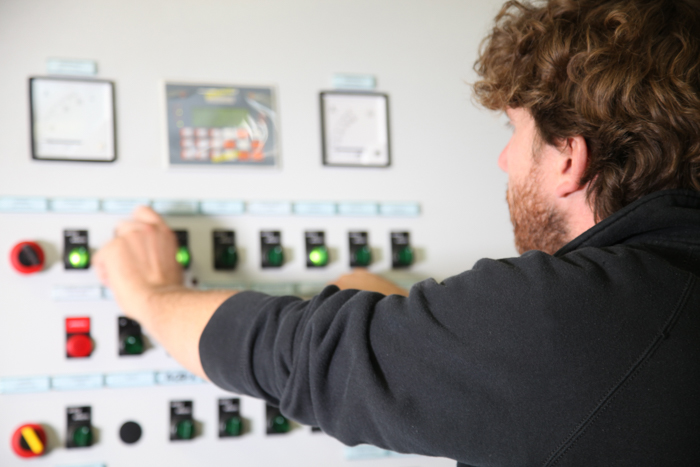 The olives arrive at the mill, and with the aim to produce the very freshest olive oil, the olives travel from orchard to press in only four hours. This means that brother Gionni, the “oil artisan”, doesn’t leave the mill much during harvest season. Much like an expert winemarker, Gionni continually monitors the pressing process, sampling and adjusting as the olives arrive. The press itself offers different settings, you can crush the olives with a hammer, cut them with a blade, or pass them through a disc using friction to break them. Gionni possesses the experience and palate to know which setting will best bring out the flavors he knows are hidden inside.
The olives arrive at the mill, and with the aim to produce the very freshest olive oil, the olives travel from orchard to press in only four hours. This means that brother Gionni, the “oil artisan”, doesn’t leave the mill much during harvest season. Much like an expert winemarker, Gionni continually monitors the pressing process, sampling and adjusting as the olives arrive. The press itself offers different settings, you can crush the olives with a hammer, cut them with a blade, or pass them through a disc using friction to break them. Gionni possesses the experience and palate to know which setting will best bring out the flavors he knows are hidden inside.
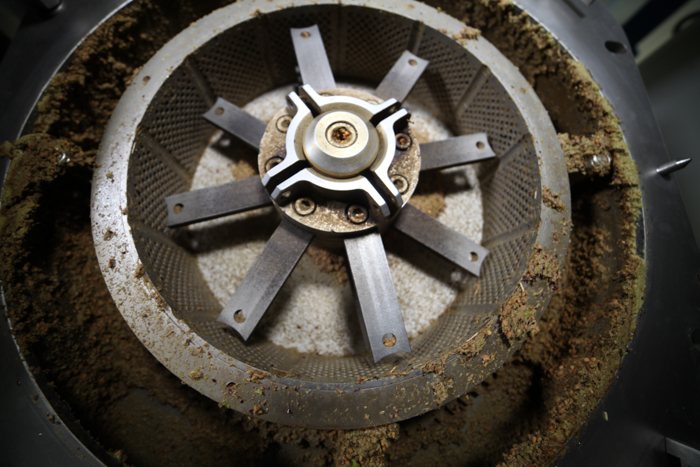
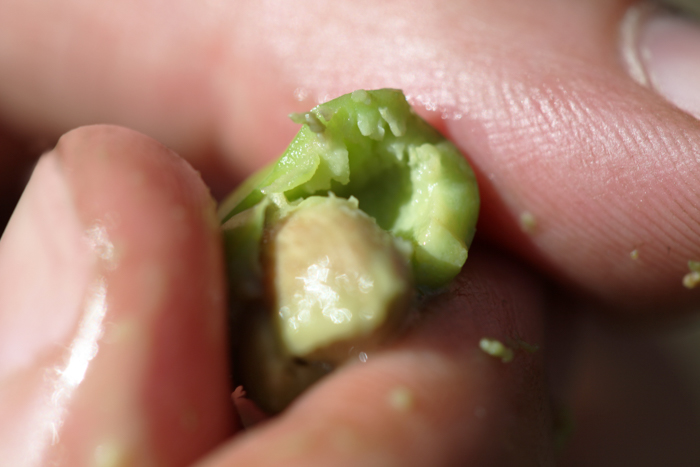
Following the pressing, the olive paste is agitated, then centrifuged twice, once to separate the liquids (oil and water) from the solids, the second time to separate the oil from water. Close to 90% of the olive is waste product, not oil. Pruneti only produces top quality first press extra virgin olive oil. They do not try to squeeze second tier oil out of the waste to increase the yield. Managing this waste is a laborious process. Pruneti turns the waste into various forms of biofuel. The pit waste becomes pellets that heat the entire facility, and the locals can come and purchase it to use for their home stoves. The rest is shipped off to become a biogas.
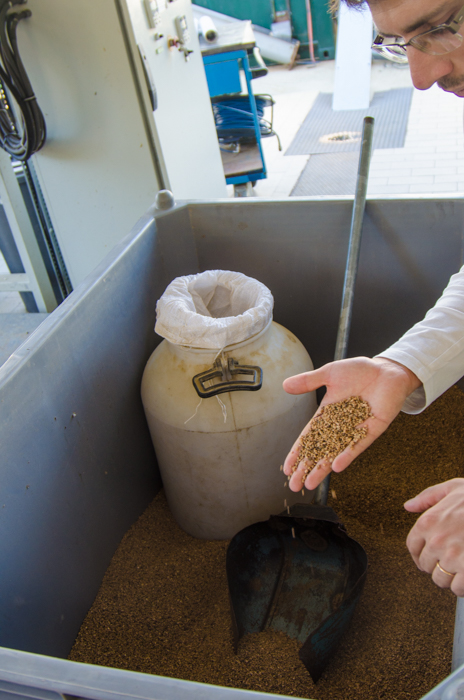
Pruneti has made a significant investment to ensure the quality of their oil. Today the entire oil production process occurs in a sealed environment, protecting the oil from harmful oxidation. From pressing to bottling the oil is only exposed to a nitrogen atmosphere, which is very important for export, providing a much longer shelf life. Whether awaiting bottling in a stainless steel tank, or after bottling, the oil is protected from oxygen until you open it at home.
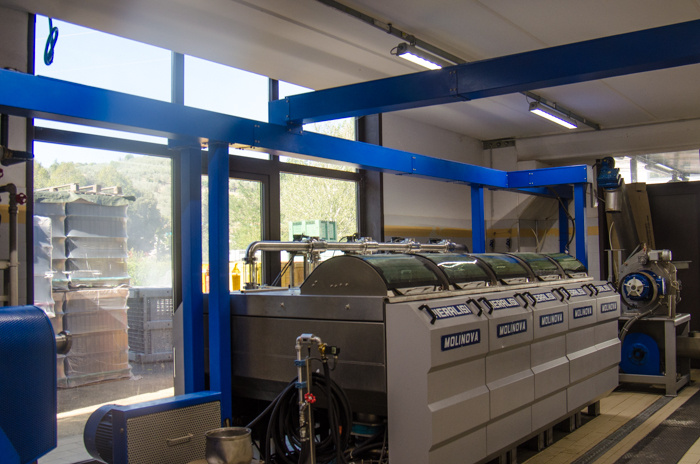
My host at Pruneti, Emanuele, then introduced me to their monovarietal oils, Leccino, Moraiolo, and Frantoio. These three varietals are common in Tuscany, representing 85% of production in the region. I can’t wait to try some of these back home in my own kitchen!
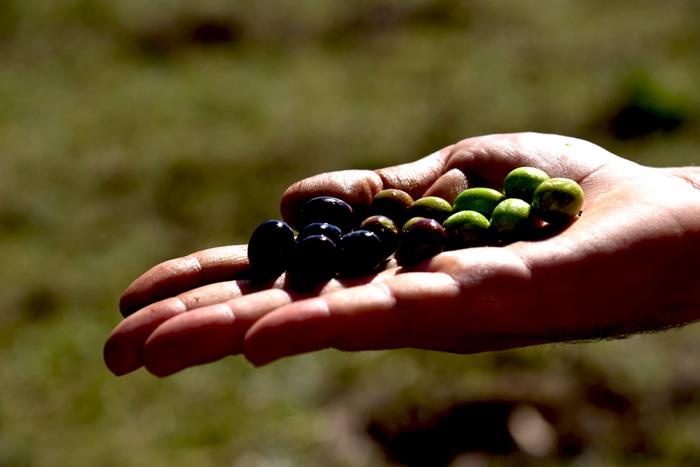
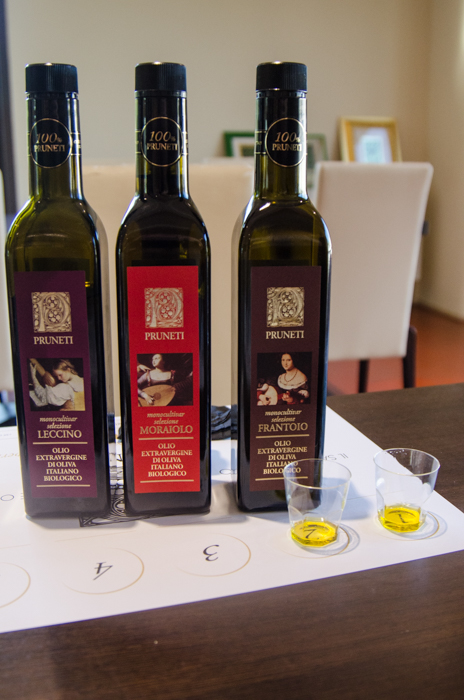 Leccino
Leccino
These olives are big and oblong. Vegetal and grassy, with a nice peppery finish. Not aggressive, somewhat mild, but still some spicy notes. Great on a lettuce salad, drizzled on carpaccio or fish.
Moraiolo
These olives are small and round, and difficult to harvest as they resist picking, and the olives tend to grow in the upper branches. The oil is a bit less aromatic, but fruitier, with notes of banana, sage, nuts. A mild, almost sweet flavor at the start, it is very spicy at the finish, with lots of black pepper. Pair this oil with grilled red meats and vegetables, or drizzle over bean soups and bitter greens, such as arugula or endive.
Frantoio
This olive is the symbol of Tuscany, boasting an array of international awards. This oil is more viscous, with bitter flavors of artichoke, arugula and radicchio. The spicy notes are more immediate than the Moraiolo, occuring more in the mouth than the throat. Persistant. Enjoy on your Bistecca alla Fiorentina, or a tomato bruschetta.
Tips for storing your olive oil:
Olive oil hates light, hates oxygen. Before opening, it will keep for 18 months if sealed with nitrogen as Pruneti oils are. After opening, it will keep for 5-8 months. iStore at room temperature (don’t refrigerate), and in the dark.
To get Pruneti oil:
Their on-line shop is on their website www.pruneti.it. Their US importer is Sungrove Foods, www.sungrovefoods.com.
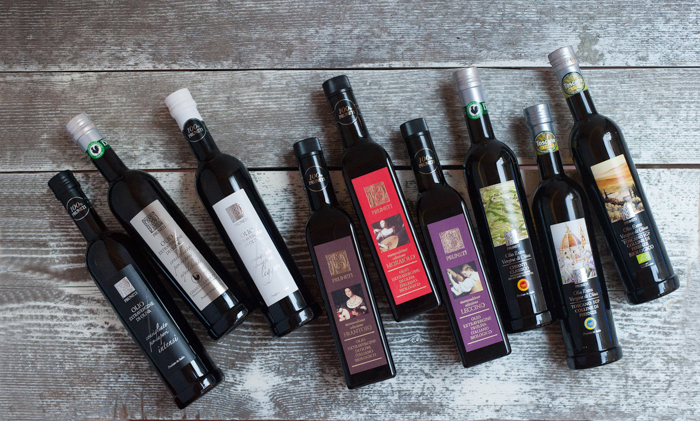

Pingback: Insalata di Porcini Crudo - Raw Porcini Mushroom Salad | Italian Food, Wine, and Travel
Pingback: Insalata di Porcini Crudo - Raw Porcini Mushroom Salad | Italian Food, Wine, and Travel
Pingback: Herb-Roasted Olives | Italian Food, Wine, and Travel